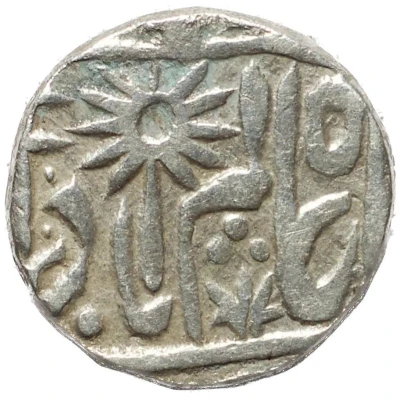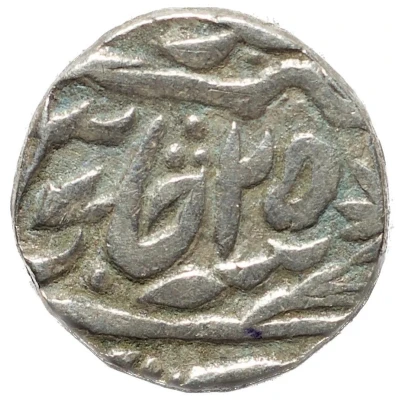


© khamma_ghani_sa (CC BY-NC-SA)
1 Rupee - Lakshman Singh ND
| Silver | 10.8 g | 17.68 mm |
| Issuer | Princely state of Bijawar (Indian princely states) |
|---|---|
| Type | Standard circulation coin |
| Years | 1833-1847 |
| Value | 1 Rupee |
| Composition | Silver |
| Weight | 10.8 g |
| Diameter | 17.68 mm |
| Shape | Round |
| Orientation | Variable alignment ↺ |
| Demonetized | Yes |
| Updated | 2024-10-05 |
| Numista | N#354140 |
|---|---|
| Rarity index | 93% |
Reverse
Sana 25 julus & zarb
Comment
Bijawar Princely state was located in the Bundelkhand region. Bijai Singh, one of the Gond's chiefs of Garha Mandla founded this state in the 17th century. Later it was conquered by Chhatarsal, the founder of Panna who was a Bundela Rajput.The coinage history of this state is rare. Rulers of Bijawar have issued coins very infrequently. These coins are crude. Ratan Singh was a ruler who began a state coinage. He was succeeded by Lakshman Singh in 1833 and he ruled until 1847.
The above shown silver Rupee was issued during the reign of Laxman Singh. These types of rupees were struck at several mints in the area, including Panna, Bijawar, and Charkhari. Both obverse and reverse of a coin bore the Persian legend.
Interesting fact
One interesting fact about the 1 Rupee coin from the Princely state of Bijawar is that it features a unique blend of traditional Indian and European design elements. The obverse side of the coin bears the image of a horseman, symbolizing the princely state's martial traditions, while the reverse side features a rendition of the state's coat of arms, which incorporates elements of European heraldry. This blending of styles reflects the cultural exchange and influences that were prevalent during the 19th century in India.